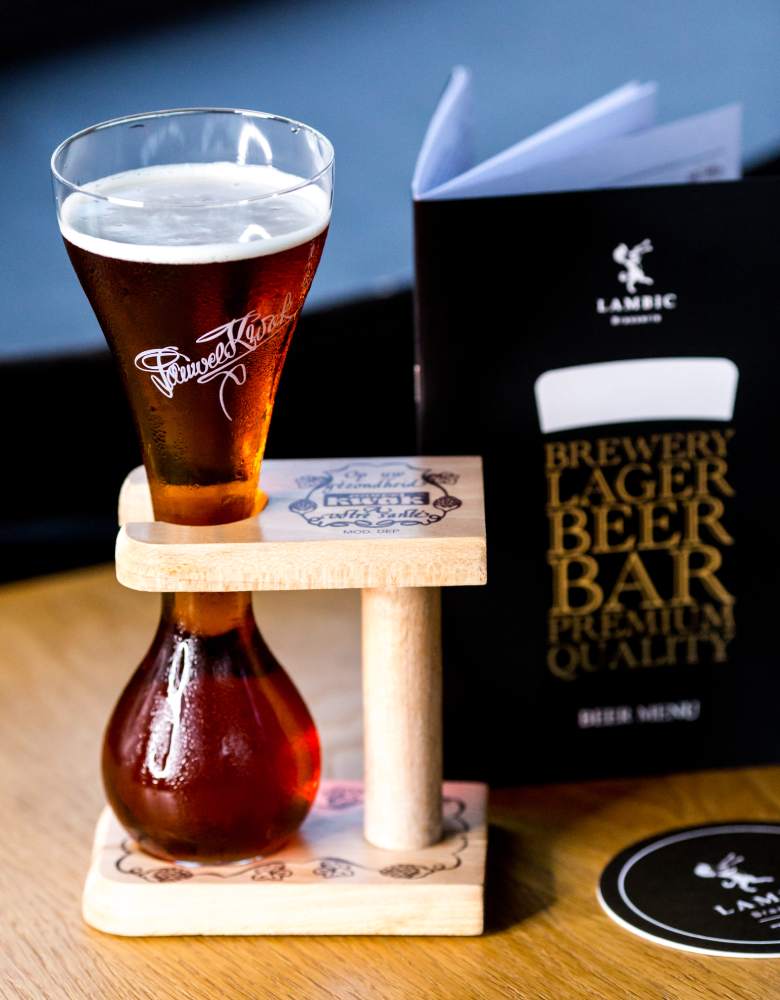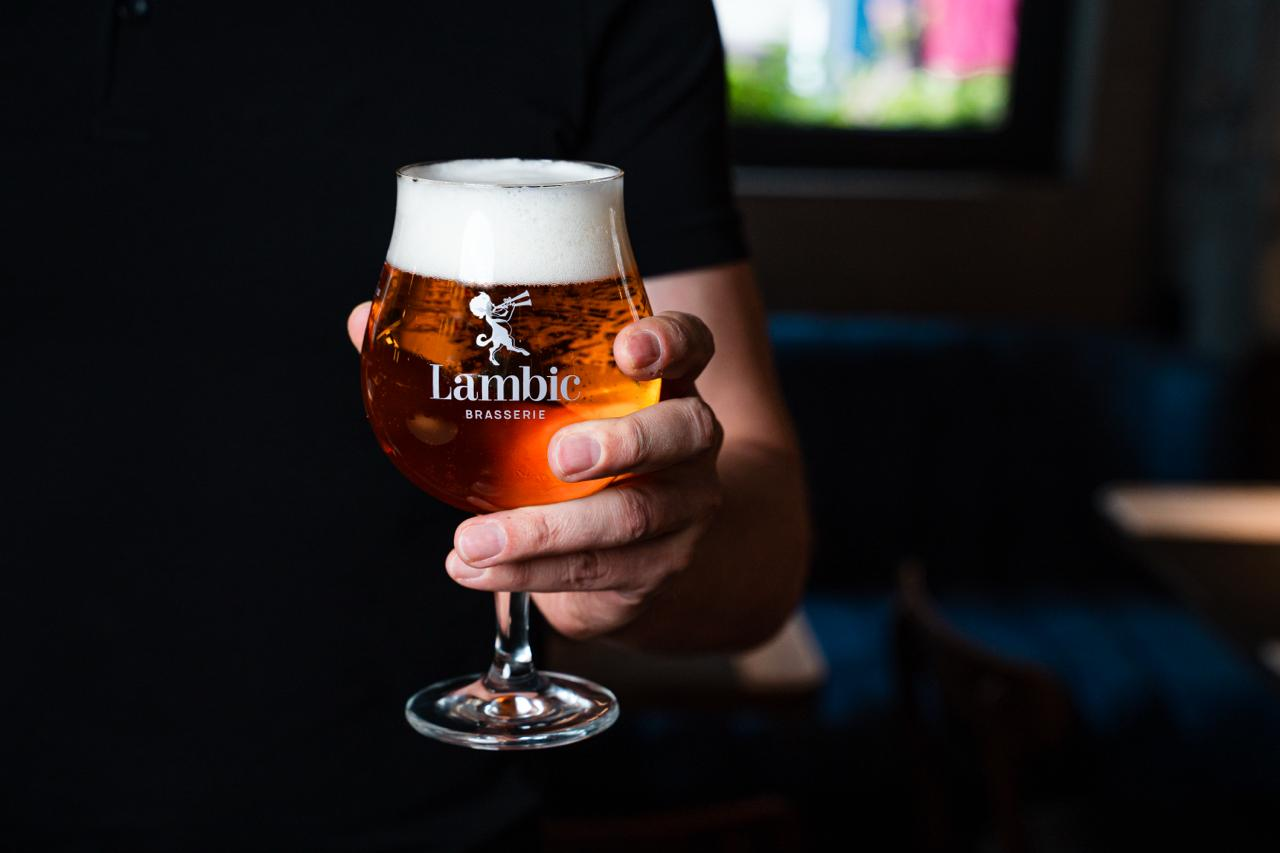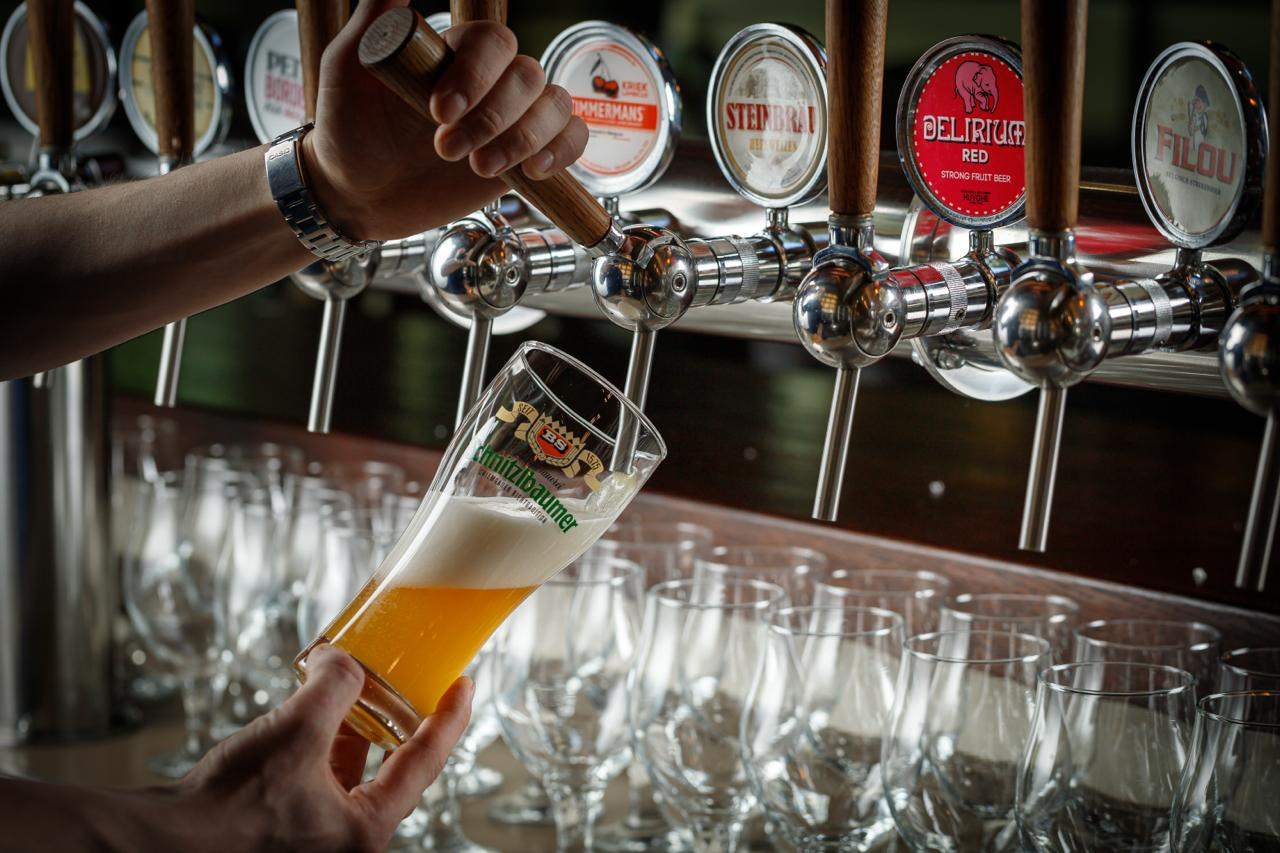The legendary Kwak: It's not even about the glass

This beer can be rightly called a symbol of Belgian brewing. And taste is not the main thing here — tourists from all over the world come to Brussels to see how Pauwel Kwak is served in the local brasserie. The fact is that this drink is traditionally consumed from a special glass. And if you add to this fact the excellent taste — it is clear why connoisseurs from all over the world want to try Kwak at least once in a lifetime.
History of Tradition
Amber ale Kwak was born in the 18th century. It owes its name to the brewer Powell Kwak, who lived and worked in Dendermond district. The man had an inn and a small production facility, where he brewed the original strong beer. The glass in this story appeared unexpectedly — at the time, coachmen, according to the Napoleonic Code, were forbidden to leave their workplace even in case of extreme thirst. And Powell Kwak figured out how to solve their problem — he invented a vessel that was tightly attached to the carriage. As a result, everyone benefited: the carriage drivers could drink the refreshing drink even on the move, Kwak made his inn a center of attraction, and centuries later he even went down in history.
A few centuries later Kwak beer was reborn — the specialists of Bosteels started to make it. And along with the drink the glass became fashionable — in memory of the legendary brewer.
An old new flavor
Pauwel Kwak today is an amber ale with a variety of flavors. There's honey, fruit, caramel, banana, licorice, orange, and yeast — you can enjoy every note. Kwak is a pretty strong beer, but the degrees in it are barely perceptible, which also makes it attractive to tourists.
To serve the legendary beer, glasses of different sizes are used: from 0.3 to a liter. In addition, in some Belgian bars there is an interesting tradition — to leave your own shoes as a deposit for the container! But travelers usually do not mind — on the contrary, many of them specifically look for places where you can drink Kwak according to all traditions.
Pauwel Kwak should be consumed chilled to 5–10 degrees. It is poured into a dry glass at a slant, and tasted only after the foam settles. This usually happens after 15–20 seconds.
If you want to taste Belgium — you should definitely start with Kwak beer. In the capital you can do it in a beer restaurant. We honor the traditions of this beautiful country and offer only the best foamy drinks. Also, our menu has a lot of excellent beer snacks — come and try them!

How to choose beer yourself: a detailed guide for beginners
Contents How to choose a delicious beer Seven signs of good beer Rules for drinking beer Beer is a low-alcohol beverage made from hops, barley malt, and yeast through fermentation. But not everything on store shelves and in bars can be called truly good beer. How can you choose a tasty beer How can you choose a tasty beer if you don't know anything about it? Here are ten simple rules to help you find a truly good drink. 1. Label To avoid buying a poor-quality product, you need to check the label for authenticity. On a quality beer, it should be affixed evenly, without wrinkles, bubbles, or damage. All information, including ingredients and shelf life, should be easy to read. And with the help of special apps, you can check the authenticity of the excise stamp to ensure the legality of the product. 2. Shelf life The shorter the shelf life, the better the quality of the beer. Stabilizers are added to the drink for long-term storage, which makes it harder on the body. For example, live unfiltered beer can only be stored for 2-3 days, and it is best to try it in breweries. Pasteurized “live” beer from the store can be stored for several weeks. Never drink beer that has expired — it can cause poisoning. 3. Strength and density The numbers 10%, 12%, or 14% on the bottle most often refer to the density of the beer, not its strength. Here is an approximate conversion to familiar degrees: — 10% density — about 4% alcohol; — 12% — about 5%; — 14% — about 6%; — 18% — about 8%. Nowadays, many manufacturers directly indicate the alcohol content. The norm is from 3% to 14%. Good beer has an alcohol-to-density ratio of about 1 to 2.5. If the balance is disturbed, alcohol may have been added to the drink. 4. Storage conditions Beer in kegs in bars or stores must be stored in a cool place. This is especially important to monitor in the summer. Heat and sunlight cause beer to spoil quickly and may cause it to ferment. Therefore, both in restaurants and supermarkets, it is worth asking where the drink was stored. It is best not to take warm bottles from the shelves. 5. Cleanliness matters Beer keg tubes should be cleaned daily or at least several times a week. If this is not done, yeast residues will spoil the taste of the drink and give it an unpleasant sourness. This means that it is better to go to trusted establishments, as the risk of encountering a poor-quality product is lower. 6. Serving tricks Before pouring beer, there is no need to wipe the glass dry. It is enough to rinse it with cold water to wash off dust and cool it down. Water droplets on the sides of the glass will help the beer reveal its taste and aroma better. 7. Counting circles After drinking a good beer, foam marks — “rings” — remain on the sides of the glass. Their number often corresponds to the number of sips. If there are no marks, the beer may be diluted. You should also be wary if the foam is too large and takes up half the glass — unscrupulous bartenders save on the drink this way. 8. Better to pour it into another container Beer can be sold in glass bottles, tin cans, or plastic containers. It is best to drink it after pouring it into a glass or mug. If you drink it straight from the bottle or can, the drink gets shaken up and quickly oxidizes, which spoils its taste. 9. What is the price? Cheap beer almost always means poor quality. Of course, a high price does not always guarantee excellent taste (part of the price may be advertising costs), but a low price is a sure sign of a bad product. 10. Choose according to taste And the last rule is that to choose a beer that you will definitely like, it is important to focus on your own taste. The main types are: porter — dark and strong; ale — thick and aromatic; lager — classic light; lambic — Belgian beer with fruity notes. Seven signs of good beer The quality of beer can be determined by several characteristics: — Good beer should not be cloudy (this also applies to unfiltered beer). Cloudiness indicates impurities or a violation of the brewing process. — There should be a slight bitterness of hops in the taste, but it should not be unpleasant. — There should be no pronounced smell of honey or acidity — this is a sign of a defect. — The taste should be dense and rich, not watery. — The foam should be dense and persistent, lasting several minutes. With light beer, the foam leaves rings as the glass is emptied. — Dark beer usually has less foam (up to 5 cm), but the bubbles last longer. — A distinct sourness and sharp bubbles indicate that the beer has fermented or contains artificial additives. Rules for consumption Have you selected a quality beer? Here is how to serve and drink it properly: — Do not mix different types of beer in one glass. It is better to finish one and pour a fresh one into a clean glass. — Choose glasses made of glass, ceramic, or porcelain. Plastic and metal are not suitable. — The optimal serving temperature is up to 8 °C. Cool beer in the refrigerator, but not in the freezer — a sharp temperature change will spoil the taste. — Pour beer correctly: hold the bottle or can 2-3 centimeters from the rim of the glass, which should be held at an angle. Pour to the middle of the glass (there is often a special mark there) to allow the foam to form and settle. — The ideal way to taste beer is in three sips: the first large (about half), the second half of what remains, and the third to finish off the rest. And don't mix beer with other alcohol. — Never add fresh beer to yesterday's leftovers. It's better to pour out any unfinished drink. Now you know how to distinguish quality beer and serve it correctly. And if you don't want to do everything yourself, come to Lambic beer restaurants! We will advise you on beer, recommend excellent snacks to go with it, and delight you with a cozy atmosphere. See you soon!
30 September 2025

Start the new season with taste: what beers to drink in autumn
Contents Lambic: born in Belgium IPA: a hoppy classic Lager: not just light Dark ale: rich and deep flavor Gose and Sours: for those who enjoy a sour taste September and October are peak months for beer lovers. With Oktoberfest and other festivals in full swing, it’s the perfect time to explore seasonal styles and discover brews that pair beautifully with crisp air and hearty food. Here’s your guide to fall-friendly beer styles and their ideal pairings. Lambic: born in Belgium Spontaneously fermented and deeply traditional, lambic offers a sour, earthy profile with notes of leather, forest, and aged cheese. Fruit lambics add berries or juices, faro includes caramelized sugar, and geuze blends vintages for wine-like complexity. Pairing: Classic lambic with cheese and seafood; fruit lambics with red meat or veal salad. IPA: a hoppy classic Bold and bitter, IPA was born out of necessity — extra hops preserved it during long voyages to India. Today, it’s a favorite for its aromatic punch and assertive bitterness. Pairing: Spicy dishes, grilled meats, kebabs, and fruit-based plates — the bitterness amplifies flavor. Lager: not just light Clean and crisp, lagers are brewed at low temperatures. While pilsners are light and hoppy, dark lagers offer caramel depth. Barrel-aged lagers are gaining popularity for their woody richness. Pairing: Spicy cuisine, pizza, burgers, and Asian or Mexican dishes — lagers balance heat and fat. Dark ale: rich and deep flavor Top-fermented and roasted, dark ales deliver flavors of nuts, chocolate, caramel, and smoke. Barrel aging adds layers of vanilla, oak, and spirits. Barleywine stands out with 10–13% ABV and aging potential. Pairing: Smoked meats, aged cheeses, and chocolate or coffee-based desserts. Serve slightly chilled (12–14°C) and sip slowly. Gose and Sours: for those who enjoy a sour taste Gose is salty and citrusy, thanks to coriander and salt. Sours — especially smoothie sours — are thick, fruity, and vibrant. Rapid fermentation with lactobacillus speeds up production. Pairing: Gose with salty snacks or sweet desserts; smoothie sours as standalone dessert drinks or digestifs. Celebrate autumn at Lambic beer restaurants. We offer the best brews from around the world, delicious food, and a cozy atmosphere. See you soon!
30 September 2025